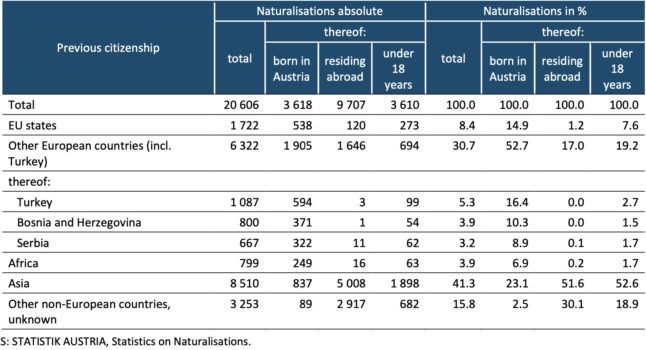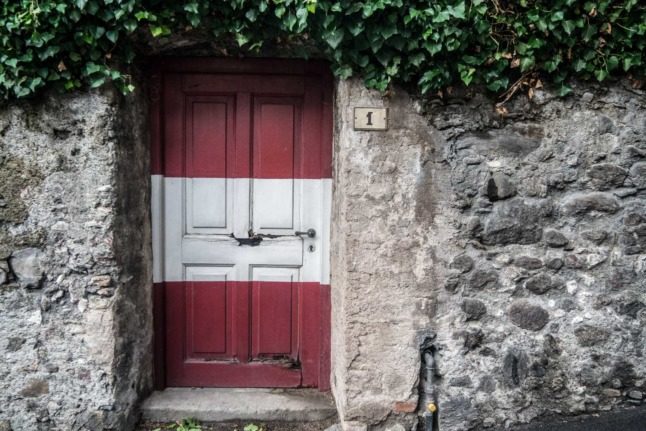The year 2022 saw 20,606 people being awarded Austrian citizenship through naturalisation processes.
That’s more than 27 percent as many naturalisations as in the previous year (16,171 naturalisations), according to data released on Thursday, February 16th, by Statistik Austria. Moreover, almost half of the naturalisations (47.1 percent) were for people residing outside Austria – which also explains why the numbers increased so much.
“The significant increase in the naturalisation of 27.4 percent compared to 2021 is mainly due to the naturalisation of politically persecuted persons of the Nazi regime and their descendants, who account for almost half of the newly naturalised persons in 2022”, said Tobias Thomas, Director General of Statistics Austria.
READ ALSO: How Austria’s newest citizens reclaimed a birthright stolen by the Nazis
In 2020, an amendment to the Austrian Citizenship Act allowing victims of the Nazi regime and their descendants to apply for dual citizenship entered into effect.
“Under this legal title, descendants of victims of the Nazi regime have had the possibility of naturalisation since September 2020 without giving up their previous citizenship in return.”, Statistik Austria explained.
Last year, 47.1 percent of all naturalisations were granted under this amendment.
READ ALSO: How descendants of victims of Nazism can apply for Austrian citizenship
Who are the new citizens?
Most of the people naturalised under the new amendment have the following three nationalities: Israel (24.2 percent of all naturalised in 2022), the United States (9.2 percent) and the UK and Northern Ireland (7.5 percent).
People naturalised for other reasons were previously most often nationals of Syria (5.7 percent), Turkey (5.3 percent) and Bosnia and Herzegovina (3.9 percent).
Half of the naturalisations in 2022 were among women and about one-sixth of them were minors (17.5 percent) or born in Austria (17.6 percent).

In eight federal provinces, more persons were naturalised in 2022 than in the previous year. The relative increases were highest in Carinthia (+41.9 percent), followed by Vorarlberg (+39.1 percent).
There were fewer naturalisations in Salzburg (-0.6 percent) compared to the previous year.
READ ALSO: How foreigners can get fast-track citizenship in Austria
Austrian naturalisation rules
Austria is considered a relatively complex country to get naturalised. Not only do people need to prove language and integration, but it can get expensive, with applicants who are awarded citizenship having to pay sometimes more than € 2,000.
Another thing that keeps people from applying is the obligation that naturalised citizens – with very few exceptions – give up their previous citizenship. In fact, this ends up being one of the main reasons why foreign citizens, especially EU/EEA or Article 50 Brits, who don’t need visas and permits, choose not to become Austrians.
“I think I speak for many people when I say that I’d claim my Austrian citizen at the drop of a hat if I could also keep my citizenship of birth (the UK in my case)”, Graham Crewe, who lives in Salzburg, told The Local in a recent poll.
READ ALSO: ‘I won’t give up my nationality’: Why foreigners choose not to become Austrian
Many foreigners, even if living for decades in Austria, still have strong ties to their home country and wouldn’t want to give up their passports. “I don’t wish to lose my connection with my birth country and family there, especially my teenage children who live with my ex-wife”, said Joe Clayton.
Readers also said that the process is “unduly difficult”, with “too many rules”, and “complicated and expensive”. In addition, new citizens, if they are male and younger than 35, will also need to serve in either the military or social service.



 Please whitelist us to continue reading.
Please whitelist us to continue reading.
Member comments